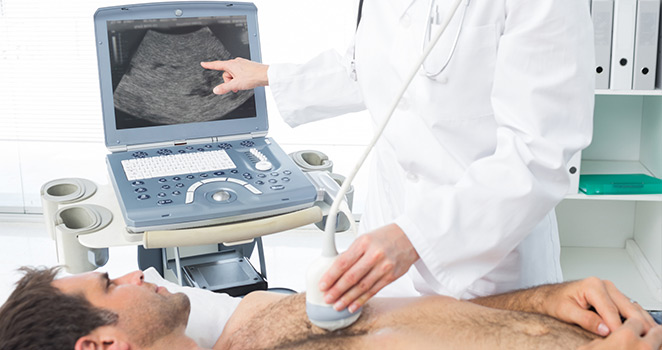- srushtigastro@gmail.com
- +91- 8073380392
Endoscopic Ultrasound

During an endoscopic ultrasound procedure, a thin, flexible tube with a miniature ultrasound probe attached to its tip is passed through the mouth or rectum into the esophagus, stomach, or intestine, depending on the area being examined. The ultrasound probe emits sound waves that bounce off the surrounding tissues, creating detailed images of the gastrointestinal wall, adjacent lymph nodes, and nearby structures such as the pancreas, liver, gallbladder, and bile ducts. These images provide valuable information about the size, shape, and composition of lesions, as well as their relation to surrounding structures, aiding in the diagnosis and staging of various gastrointestinal and pancreatic conditions, including cancers, cysts, inflammatory diseases, and anatomical abnormalities.
Endoscopic ultrasound is beneficial for detecting small lesions that may not be visible on conventional imaging tests such as CT scans or MRI scans. Additionally, it allows for the guided collection of tissue samples (biopsies) or fluid samples (fine-needle aspiration) from suspicious areas for further analysis, facilitating accurate diagnosis and treatment planning.
We provide the best Endoscopic Ultrasound in HSR Layout. Contact us today.
Benefits:
Overall, endoscopic ultrasound is a valuable diagnostic and therapeutic tool in gastroenterology and hepatology, offering precise imaging, guided interventions, and improved patient outcomes in the management of gastrointestinal and pancreatic disorders.
Empowering assistance, right when it matters. We’re here to lend a hand whenever you need it.

Call : +91- 8073380392
srushtigastro@gmail.com
Srushti Gastro & liver Clinic 186, 165, 9th Main Rd, Sector 6, HSR Layout, Bengaluru, Karnataka 560102